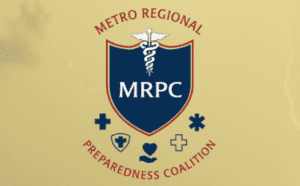Who is a member?
Our members are the local governments of Massachusetts and their elected and appointed leadership.

The Metro Regional Preparedness Coalition consists of 60 communities.
When the coronavirus public health emergency hit, the state’s Health and Medical Coordinating Coalitions were already organized and ready to help with the response.
It was nearly 20 years ago when the Department of Public Health identified Emergency Preparedness regions in Massachusetts. Beginning in 2004, with 9/11 funding from the U.S. Centers for Disease Control’s response to bioterrorism, the DPH began distributing funds using a population-based formula.
In 2013, the DPH introduced the Health and Medical Coordinating Coalition model to replace the original Emergency Preparedness programs.
The HMCCs cover all the Commonwealth’s municipalities within six regions. A host agency is chosen for each HMCC, which receives CDC funding, via the DPH, to coordinate the coalition, hire staff, and allocate funding to cities, towns and sub-regions. The host agent does not need to be a municipality.
This formal collaboration between local public health departments and health care organizations aims to coordinate planning, response, recovery and mitigation for regional public health activities, including emergencies.
Each HMCC has core members from local public health agencies, public and private emergency medical services, nursing homes and long-term care facilities, hospitals and acute care facilities, community health centers, and large ambulatory care organizations.
HMCCs may expand their membership to include health care providers, mental health agencies, home health providers, and first responders such as police, fire and emergency managers.
Most HMCCs meet monthly, and they routinely provide training for members on how to respond to emergencies. Past emergency responses have included West Nile Virus, Eastern Equine Encephalitis, and flu vaccine shortages. Exercises are occasionally held to allow for “on-hands” training with hypothetical incidents.
For emergency preparations, an HMCC coordinates regional efforts for all phases of a disaster cycle and remains involved until the end of the emergency. Such regional coordination improves information sharing and effective response, while building capacity to handle local disaster responses.
In addition to region-specific public health issues, the HMCCs typically address the following tasks:
• Develop all-hazards response plans consistent with municipal Comprehensive Emergency Management Plans
• Educate residents on prevention and control measures
• Maintain disease surveillance and investigation
• Maintain essential public health functions during emergency periods
• Dispense vaccine and other emergency treatment at emergency dispensing sites
For example, Ashland, a town of 19,000, belongs to Region 4AB. Issues currently being addressed are: handling COVID-19 cases, surge capacity issues, and planning for the pandemic and coordination with municipal departments on continuity of operation plans and securing personal protective equipment.
Details about each of the six HMCCs, their host agent and the municipalities they serve can be found at www.mass.gov/service-details/learn-about-the-health-and-medical-coordinating-coalitions.
When the state activates its Emergency Operations Center, the DPH is the lead agency, responsible for assessment, coordination, technical assistance, testing, coordinating hospital care, coordinating mental health and crisis counseling, and ensuring food and drug safety as well as issuing public health information.
Additionally, the Medical Reserve Corps of Massachusetts assembles emergency response volunteers within 38 units across the Commonwealth. To find a Medical Reserve Corps that serves each city or town, visit www.mamedicalreservecorps.org.
Written by Mark Oram, Health Director in Ashland and a city councillor in Marlborough and D.J. Wilson, tobacco control director/public health liaison at the MMA.